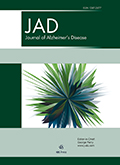Authors: Nakanishi, Miharu | Yamasaki, Syudo | Nakashima, Taeko | Miyamoto, Yuki | Cooper, Claudia | Richards, Marcus | Stanyon, Daniel | Sakai, Mai | Yoshii, Hatsumi | Nishida, Atsushi
Article Type:
Research Article
Abstract:
Background: The emotional impact of the coronavirus disease 2019 (COVID-19) pandemic on people with dementia has been quantified. However, little is known about the impact of change in home-care use owing to the pandemic. Objective: To determine the longitudinal association between dementia, change in home-care use, and depressive symptoms during the pandemic. Methods: We included data of 43,782 home-dwelling older adults from the English Longitudinal Study of Ageing (ELSA), Study of health, Ageing and Retirement in Europe (SHARE), and National Health and Aging Trends Study (NHATS). This study considered the latest main wave
…survey prior to the pandemic as the baseline, and the COVID-19 survey as follow-up. In a series of coordinated analyses, multilevel binomial logistic regression model was used to examine the association between baseline dementia, change in home-care use at follow-up, and presence of depressive symptoms. Results: Dementia, using the ELSA, SHARE, and NHATS datasets, was identified in 2.9%, 2.3%, and 6.5% of older adults, and home-care use reduced in 1.7%, 2.8%, and 1.1% of individuals with dementia, respectively. Dementia was significantly associated with the increased risk of depressive symptoms in all three cohorts. However, the interaction between dementia and period (follow-up) was non-significant in SHARE and NHATS. Across all three cohorts, home-care use during the pandemic, regardless of change in amount, was significantly associated with increased depressive symptoms, compared to the non-use of home care. Conclusions: These results highlight the need for tailoring dementia care at home to promote independence and provide sustainable emotional support.
Show more
Keywords: Alzheimer’s disease, cohort studies, dementia, depression, home care services, SARS-CoV 2, social interaction
DOI: 10.3233/JAD-240097
Citation: Journal of Alzheimer's Disease,
vol. Pre-press, no. Pre-press, pp. 1-13, 2024
Price: EUR 27.50





